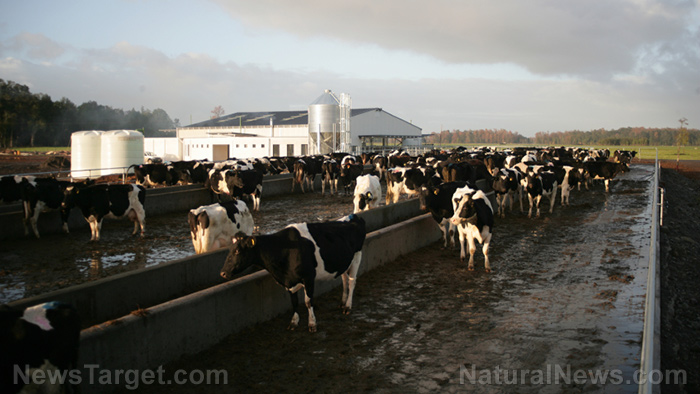Food web disturbance and elevated levels of mercury in rivers may have been caused by dams, according to study
11/16/2017 / By Isabelle Z.

The green energy “run of river” dams that have been gaining in popularity could have a very serious downside. This type of dam diverts a part of a stream though a set of turbines before feeding it back into the stream downriver. While proponents say this type of hydro project is desirable because it can reduce greenhouse gas emissions and has lower water storage, flooding extent and water level fluctuations than its conventional hydropower counterparts, researchers are discovering that it can have a big impact on the ecosystem.
One area of particular concern is the production of methylmercury from the dam and its disruption of natural water flow. These dams can cause methylmercury to spike in two main ways. First of all, they can form head ponds, which are small reservoirs that can flood the soil and form low-oxygen environments. In addition, they can cause temperatures in the stream to rise because of the reduced flow conditions caused by diverting part of the stream to the turbines.
Researchers from the Society of Environmental Toxicology and Chemistry studied American dippers at 13 stream sites across British Columbia to determine whether these run-of-river dams affected the mercury levels and food webs.
American dippers an excellent indication of stream health
According to the Cornell Lab of Ornithology, the American dipper is the only true aquatic songbird found in North America. It catches its food underwater in fast-moving steams by swimming and walking along the bottom of the stream, and it is considered an excellent indicator of the quality of a stream. These birds eat underwater insects as well as salmon eggs that can accumulate methylmercury and then biomagnify it all the way up the food chain. Therefore, studying them can provide helpful clues about the quality of a stream as well as contaminant exposure.
The researchers looked at samples of American dipper feathers and blood to analyze the bird’s diets and levels of mercury. They found that birds living near the regulated streams fed more in the head ponds of run-of-river dams, and the dippers and invertebrates that were sampled below the dams of these streams had tissues that suggested a heightened activity of sulfate-reducing bacteria and more methylation of mercury below the dams. Although slightly higher mercury levels were found in the blood and feathers of dippers from regulated streams compared to unregulated ones, the difference is not significant.
Nevertheless, American Dippers at these mountain streams had higher levels of mercury than nearly every other songbird tested in North America, and this is being attributed to the greater atmospheric deposition of mercury in the snow found at such high elevations. In fact, one of the more recently regulated streams had dippers whose mercury concentrations were at levels considered toxic. The researchers wrote that the biogeochemical conditions found in the reservoirs of these regulated streams could be contributing to the production of methylmercury.
Ramifications for entire food chain
Therefore, they are calling for future studies monitoring the concentrations of mercury in the food web at large both before and following run-of-river regulation. They specified that this should be studied downstream as well as upstream of the intake due to the high potential for the production of methylmercury in these systems to vary as time passes.
Their findings were published in the Environmental Toxicology and Chemistry journal, and they raise some interesting questions about how these dams could impact human health as well. After all, methylmercury moves through the food chain, and people who are exposed to it via diet have higher risk of cardiovascular problems, and it has also been associated with neurological abnormalities and ADHD in children.
Sources include:
Tagged Under: American dippers, aquatic life, dams, Ecology, ecosystem health, environment, environmental toxins, food chain, mercury, mercury in streams, methylmercury, run-of-river dams, wildlife




















